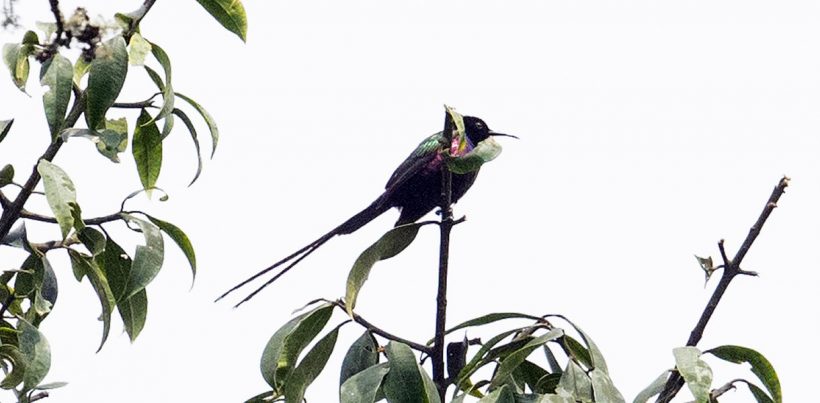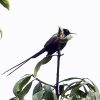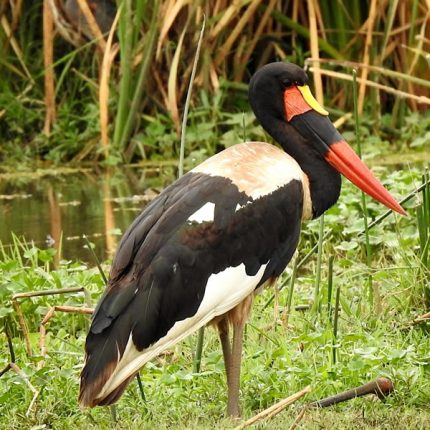16 Days Albertine Rift Endemic bird watching Safari to Uganda
Description
Are you looking at booking 16 Days Albertine Rift Endemic bird watching Safari to Uganda? Yes, The Albertine Rift is the western arm of the East African Great Rift valley, straddling over Uganda, Rwanda, Burundi, Democratic Republic of the Congo, and Tanzania. It is one of the Richest Zones with the most bio diversity on the African continent for highly sought after, Endemic, Threatened, near threatened Endangered And High altitude rarity species having more than half of the birds in Africa, 40% of the mammals and approximately 20% of the high altitude tropical and afro-montane plants, and when it comes to vertebrate species no other region on the continent can out number this area making it one of the anchorages of Biodiversity that any one doing a safari to Uganda should not miss featuring it.
After a great research by our expert birding safari guides, Journeys Uganda has crafted this Albertine Rift Endemic Birding Safari with great focused, we highly recommended this to twitchers and other birding enthusiasts who what to enrich their checklist and have done birding in most African countries except the Albertine Rift Area or Uganda in particular. This Albertine Rift Endemics birding Safari takes you to Biodiversity hotspots and yet the major Important Bird Areas with in the Albertine Rift in Uganda and not that our focus will not only be birds but we have also offered options for opportunities the trek the mountain gorillas of Bwindi Impenetrable Forest National Park and the Chimpanzees of Kibale Forest.
On this safari, we shall focus on bird species in Uganda and the special ones will be Archer’s Robin-chat, Rwenzori Apalis, Chapin’s, Rwenzori Nightjar, the Handsome Francolin, Rwenzori Batis, the begrimed dark olive Grauer’s warbler, Yellow-eyed black flycatcher, the Grauer’s broadbill, Mountain masked (Black Faced) Apalis, Dwarf Honeyguide, Red-faced Woodland Warbler, Rwenzori Turaco, Red-throated Alethe, Short-tailed Warbler, Kivu-ground thrush, Grauer’s Rush Warbler, Regal Sunbird, Rwenzori Blue-headed sunbird, Stripe-breasted Tit, Strange Weaver, Dusky Crimsonwing, Shelley’s Crimsonwing, to mention but these.
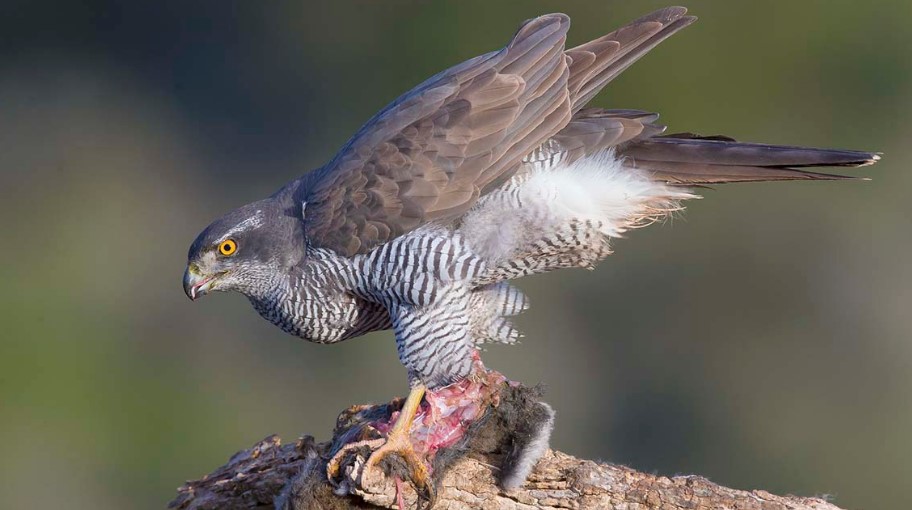
DAY 1: Arrival for you Uganda Albertine Rift Endemic birding Safari:
Arrival at Entebbe International Airport and transfer to the Papyrus Guest House or Equivalent. Depending on the time of arrival, we bird Entebbe botanical Gardens or Uganda Wildlife Education Centre as your out, expect African Grey and Brown Parrot, Pink-backed Pelican, Grey-crowned crane, Village, Slender-billed, Black Headed, Northern-brown Throated, Golden-backed, Orange, Baglafecht, Black-necked and Vieillot’s Black Weavers, African Fish Eagle, small Banded-snake Eagle, African Goshawk and the Swamp Flycatcher among other bird species

DAY 2 Uganda Albertine Rift Endemic Birding Safari to: Mabamba for the Shoebill.
Much as the focus of this trip on the Albertine Rift Endemics of Uganda, it is very hard to mention a birding trip to Uganda without Shoebills as they are top on the bucket list of any bird watcher to Uganda, so we shall start early in their such then transfer to Lake Mburo National Park
After an early morning breakfast we start our Albertine Rift Endemic Birding safari with Mabamba or Namugabo Wetlands about 40km west of Entebbe area on the Lake shores of Victoria. This is one of the few remaining swamps in Uganda protected by the local communities and National Environmental Management Authority (NEMA) together with the Uganda Birding Club and Nature Uganda and classified as an IBA (Important Bird Area)/ Ramser site is home to about 11 Shoebills.
This charismatic bird is one of the highly sought-after birds in Africa thus as Journeys Uganda, our guides together with the canoe captains and local guides who live near the wetlands make special efforts today to find it by paddling through the tiny channels, as we peddle, lookout for the White-backed and Yellow-billed Duck, Pink-backed Pelican, Purple, Common Squacco, Grey and Goliath Heron, small groups or pairs of Blue-breasted Bee-eater, the striking African Fish-Eagle, African Water Rail, African Marsh-Harrier, Allen’s and Purple Gallinule, Swamp Flycatcher, Pied and Malachite Long-toed Plover, Blue-headed Coucal, Long-tailed Cormorant, Papyrus Gonolek, the easily mistaken Papyrus Canary, White-winged Warblers African and Lesser Jacana the rare Weyns’s Weaver seasonally visits the swamp in flocks we later continue to Lake Mburo National Park approximated at 260 sq. Km which is the major stopover for any tourist between Entebbe International Airport and the Gorilla habitats that exposes the unique fauna as compared to other National Parks of Uganda. Mburo is the only National Park in Uganda that contains an entire lake. Situated in rolling hills and open grassy valleys, all these coupled with 4 other smaller lakes that can be in view at certain vintage points in the park.
Birding here will produce; the largest Violet-tipped together with the Temminck’s, Common Quails, Green – backed Woodpecker, the migratory Brown-chested Plover, Emerald-spotted Wood Dove, Black-bellied Bustard, Green Wood hoopoe, Bare-faced Go-away Bird Green Capped Eremomela, Yellow Bellied Apalis, Rufous-naped and Flappet Larks, Bearded, Green-backed and Nubian Woodpecker, Black Cuckoo-Shrike, Blue-naped Mouse bird, Lilac-breasted Roller, Coqui Francolin, African-wattled Plover, Rufous-chested Swallow Southern Ground Hornbill is rarely seen, Spot-flanked, Crested, Red-faced and Black-collared Barbets, of the 313 different bird species and dominated by savannah, water birds like the rare Shoebill, White-winged Warblers, African Finfoot, Giant Kingfisher, Little Bittern, White Backed Night Heron, papyrus Yellow Warbler, Papyrus Gonolek and Papyrus Canary are on the list of sightings.

DAY 3 Uganda Albertine Rift Endemic Birding Safari Mgahinga Gorilla National Park in Uganda
Today, we bird to Kisoro in western Uganda for the birding experience in Mgahinga Gorilla National Park, which is the country’ most scenic protected area, but before we depart, embarking on a boat ride to find the African Finfoot, White-backed Night Heron and the Giant Kingfisher will be a great add to our Albertine Rift Birding Safari to Uganda, after this we proceed for a game and birding drive checking out of Lake Mburo National Park which gives us more chances of viewing mammals like Impalas, Elands, the Zebras, Topis, Buffaloes among others, as we bird we focus our attention on the search for the Red Faced Barbet, visiting Brown Chested Plover, southern resident Coqui Francolin and Tabora Cisticola, Lesser Blue Eared Starling, Red Headed Weaver, Bare faced Go-away-bird, Black Shouldered Cuckoo Shrike, Sulphur Breasted Bush-shrike, Buff Bellied Warbler, Green Capped Eremomela, Red-billed Wood-hoopoe and more acacia associated birds, proceed to Kisoro birding en route with stops for the Papyrus Gonolek, White-winged Scrub Warbler, Papyrus Canary and Papyrus Yellow Warbler, Highland Rush Warbler, further down in the Echuya Forest Reserve get introduced to the Albertine Rift Endemics like the Regal and Blue Headed Sunbird, Strange Weaver, Rwenzori Batis, Rwenzori Apalis, Mountain Masked Apalis and other high altitude bird species including the Doherty’s Bush-shrike, Grey Cuckoo-shrike, Barred-long tailed Cuckoo, Mountain Yellow Warbler, Rwenzori Hill Babbler, White-eyed Slaty Flycatcher and many more stay at Kisoro Travellers Hotel.
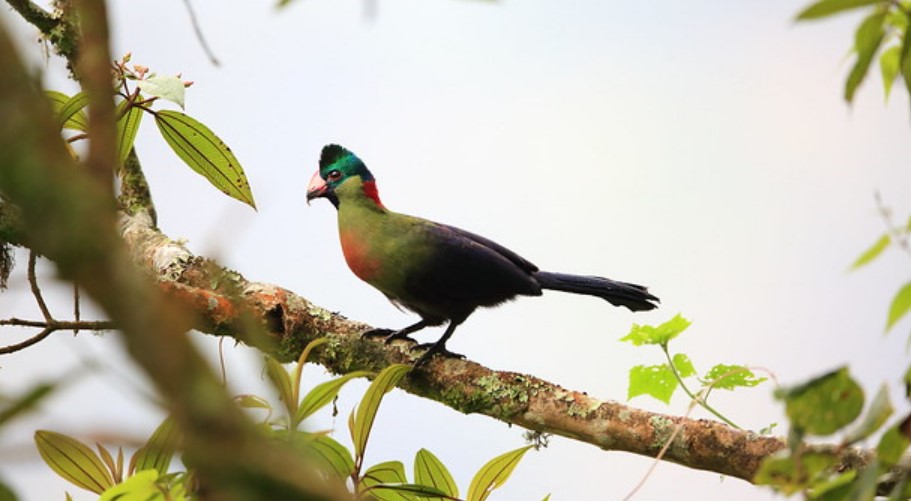
DAY 4 Uganda Albertine Rift Endemic birding Safari Mgahinga National Park – Uganda
Today we start early with the drive to the parks trail head, given the season, winds are always high in the morning but they do no much hinder the birding as the magic starts slightly after the park office with sounds of the Archer’s Robin-chat, and later taking you through a variety of Montane habitats conducive for the superb painted Rwenzori Turaco, the melodious and orange brown fore-crowned Kivu Ground Thrush, Dwarf Honeyguide, Rwenzori Batis, Rwenzori Double-collared, Regal Blue-headed and the Purple-breasted Sunbirds, Doherty and Lagden’s Bush-shrike, Ever-green Forest, Cinnamon Bracken and Mountain Yellow Warblers, Thick-billed and Streaky Seedeater the Dusky and much Sought after Shelley’s Crimson-wing, White-bellied Crested and White-tailed Crested Flycatcher, White-starred Akalat along with many more bird species.
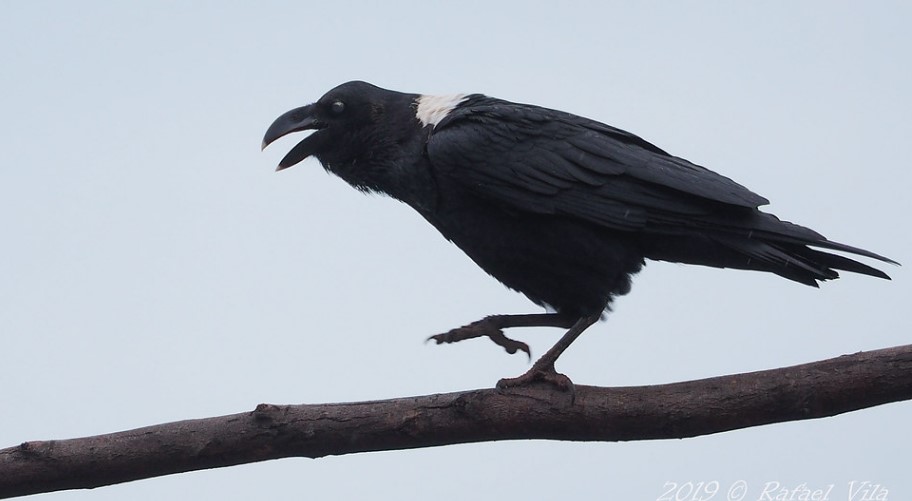
DAY 5 Uganda Albertine Rift Endemic birding Safari to Ruhija Bwindi Impenetrable National Park
Today we start birding to Ruhija via the Kisoro town which home to flocks of the very large black White-necked Raven and on the way out look out for the pale Cape Robin-chat, Red-throated Wryneck, Yellow-crowned Canary, Yellow Bishop, East African Swee, the ponds as you start the climb are good for the Rufous Bellied Heron, Red-knobbed Coot, Hottentot Teal, Blue-headed Coucal, Common Moorhen, Purple Swamphen among others. In the Echuya Forest Reserve, look out for the Northern-double Collared, Regal and Blue Headed Sunbird, Black-billed and Strange Weaver, Chin-spot and Rwenzori Batis, Chestnut Throated, Rwenzori and Mountain Masked Apalis, Doherty’s Bush-shrike, Pink-footed and Northern Puffback, Grey Cuckoo-shrike, Black-billed Turaco, Barred-long tailed Cuckoo, Red-faced Woodland and Mountain Yellow Warbler, Rwenzori Hill Babbler, Brown-capped Weaver, White-eyed Slaty Flycatcher and many more continue to Ruhija where we have high chances of pairs and small flocks of Handsome Francolin on the road, Yellow-eyed Black Flycatcher, Dusky Crimson-wing, Grauer’s Warbler, Stripe-breasted Tit, White-browed Crombec, Western Green Tinkerbird, Purple-breasted Sunbird, Slender-billed, Waller’s, Narrow-tailed and Sharp’s Starling list is endless. Dinner and overnight stay at Bakiga Lodge.
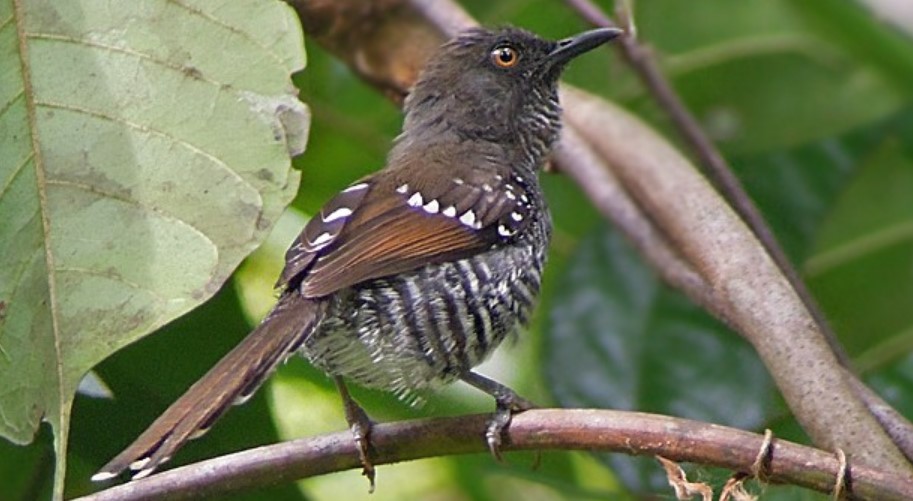
DAY 6 Uganda Albertine Rift Endemic birding Safari to Mubwindi Swamp in Bwindi Impenetrable Forest National Park
This is the highest section of Bwindi National Park and the temperatures range between 9 and 20 degrees Celsius, the nights are really cold compared to other parts. Forest birding at Bwindi ranks the best in Uganda and Africa at large as the area is home to over 23 highly localised Albertine Rift endemic bird species.
On our walk depending on the trail we choose, expect to find the Grauer’s Warbler, Chestnut-throated, Black-throated, Rwenzori and Black-faced Apalis, Banded Prinia, Chubb’s Cisticola, Red-throated Alethe, Archer’s Ground Robin, Black-and-white Shrike, White-bellied Crested and Yellow-eyed Black-flycatcher, Rwenzori and Chin-spot Batis, Pale-breasted, Mountain, and Grey-chested Illadopsis, Dusky and Stipe-breasted Tit, African Hill-Babbler, Blue-throated Brown, Northern Double-collared, Rwenzori Blue-headed, Regal and Grey-headed Sunbird, Mackinnon’s Shrike, Black Boubou, Northern and Pink-footed Puffback, Doherty’s and Lagden’s Bush-shrike, Montane Oriole, Narrow-tailed, Stuhlmann’s, Waller’s and Sharpe’s Starling, Strange and creepy Brown-capped Weaver, the shy and usually hissing Dusky Crimsonwing, Streaky and Thick-billed Seedeater, the high light of the walk is always finding the leafy green Grauer’s or African-green Broadbill, Oriole Finch, Ayres’s and Cassine’s Hawk-Eagle, Mountain Buzzard, Black-billed Turaco, Dusky and Barred Long-tailed Cuckoo, Scarce Swift, Narina and Bar-tailed Trogon, Red-faced Woodland Warbler, Cinnamon-chested Bee-eater is in most parts of the forest mostly the edges and openings, Bronze-naped Pigeon, Red-chested Owlet, Olive, Tullberg’s, Cardinal and Elliot’s Woodpecker, African Broadbill, Western Green Tinkerbird, Petit’s and Grey Cuckoo-shrike, Shelley’s, Yellow-streaked, Yellow-throated, Mountain, Slender-billed and Toro Olive-Greenbul, Equatorial Akalat, Olive Thrush, White-tailed Ant-thrush, as we descend to the swamps we lookout for the Grauer’s Rush-warbler, the African water Rail is very responsive and the secretive Red-chested Flufftail. While in here there are other mammals like the Gorillas, small forest duikers and endemic Chameleons that can be sighted on our birding walk. We later stroll back to the beginning point and head to the Lodge. Later before dinner, we can head out and look for the Rwenzori Nightjar.
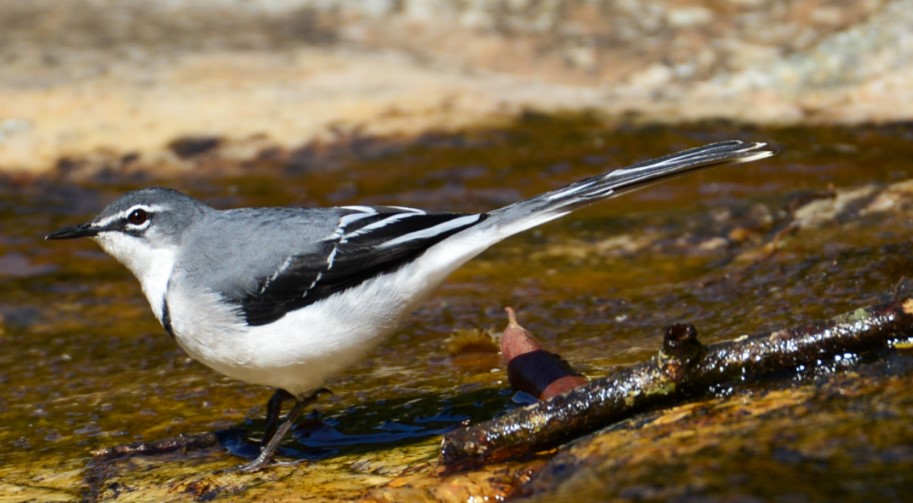
DAY 7 Uganda Albertine Rift Endemic birding Safari to Buhoma section and an optional Gorilla
After an early breakfast, you will report to the park headquarters for a briefing before the gorilla tracking experience a once in a lifetime one. This is the major tourist activity in Bwindi Impenetrable Forest National Park and may take anywhere between 1 hour and 8 hours, so come prepared as some energy levels are necessary for its success. It is an awesome interaction as you stare into the eyes of these gentle apes; It is indeed a “once in a lifetime” experience that anyone who visits this part of the world should not miss. Each encounter is different and has its rewards, but you are likely to enjoy the close view of adults feeding, grooming and resting as the youngster romp and swing from vines to small tree branches you cannot imagine supporting their weight.
After the trek we shall carry on with our Albertine Rift Endemic birding safari through “the neck” area to Buhoma- Bwindi Impenetrable National Park looking out for the Black-billed Turaco, African Black Duck, Cassine’s Flycatcher, Mountain Wagtail, Chin-spot Batis, Fine-banded Woodpecker, Bronze-naped Pigeon, Dwarf Honeyguide, Red-tailed Greenbul, and we should come across Bee-eaters including Black Bee-eater and Cinnamon-chested Bee-eater, Many-coloured Bush-shrike, Ayres’s Hawk-eagle, Grey Apalis, Narina Trogon, Honeyguide Greenbul, Yellow-spotted, Yellow-billed and Hairy-breasted Barbet, Red-throated Alethe, Ansorge’s Greenbul, African Shrike-flycatcher and Red-headed Malimbe among the high altitude rarities. Dinner and overnight stay at Ride For A Woman
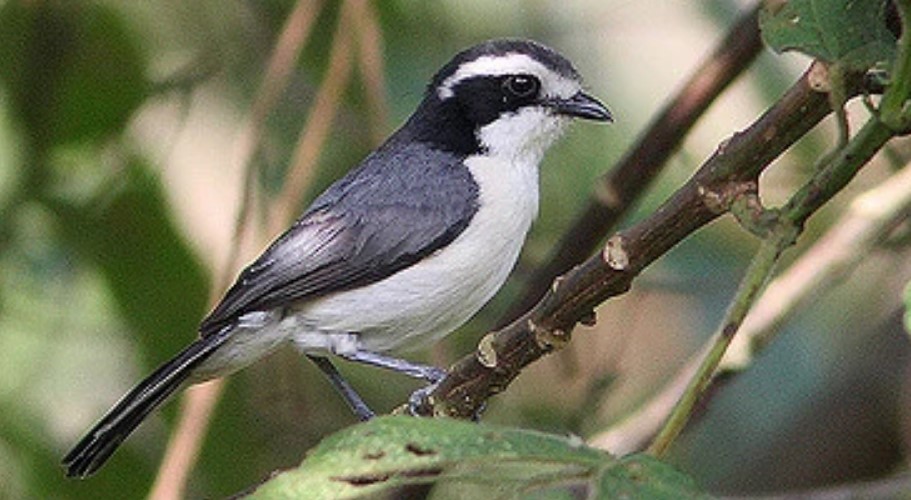
Day 8: Our Uganda Albertine Rift Endemic Birding Safari takes us to the Buhoma Main Trail
We start early with a focus on certain recently sighted bird species like the rarely seen Oberlaender’s and Kivu Ground-Thrush, Red-throated Alethe, Short-tailed Warbler, White-bellied Crested-Flycatcher, Many-coloured, Luhdher’s and Bocage’s Bush-shrike, White-bellied Robin-Chat, Grey-headed, Green, Green-throated, Blue-headed, Purple-breasted, Little-green, Blue-throated Brown and Northern Double-collared Sunbird, Brown-capped, Baglafecht and Black-billed Weaver, Magpie Mannikin. The dazzling Black Bee-eater can be seen on open bare branches of the tall trees that dominate the Bwindi Forest not leaving out the Blue-throated Roller with the uniform dark brown Sooty Flycatcher, Narrow-tailed, Waller’s, and Stuhlmann’s Starling, Black-faced Rufous-Warbler, Red-tailed Bristlebill, African Broadbill, Banded Prinia, Elliot’s and Tullberg’s Woodpeckers, Shelley’s, Cabanis’s, Red-tailed, Little- Plain, Slender-billed and Ansorge’s Greenbuls, Red-faced Woodland Warbler, White-browed Crombec the always probing Jameson’s Antpecker , the skies of great views of the Scarce Swift and many more other bird species. We may encounter other wildlife like the huge yellow-backed duiker antelope and Black-fronted, Guereza colobus, L’Hoest’s, blue and red-tailed monkeys, as well as chimpanzees which are always heard than seen.

Day 9. The tour continues to Kasese for birding in the Rwenzori
Bird through Ishasha Sector of Queen Elizabeth National Park, this drive takes you through the Savannah. Therefore you will pick some Savannah – wood and grassland birds including the Grassland and Plain-backed Pipits, African Cuckoo Hawk, Flappet and Rufous Napped Lark, Black Cuckoo, Yellow-throated Longclaw, White Winged Tit, Ovambo Sparrow Hawk, Grassland Moustached Warbler, Marsh Tchagra, Black Coucal, Broad-tailed Warbler, Brubru, Blue-napped Mousebird, White-headed Barbet, Yellow-fronted Tinkerbird, Stout, Trilling, Siffling and Croaking, Red-collared Widowbird, Southern Red Bishop, White-winged Widowbird, Western Banded and Black Chested Snake-Eagle, Bateleur, Marital Eagle and many more bird species. Mammals may include; African Buffalo, tree-climbing lions, Topi, African Elephants, Common Warthog, Uganda Kob, Waterbuck, Leopard.
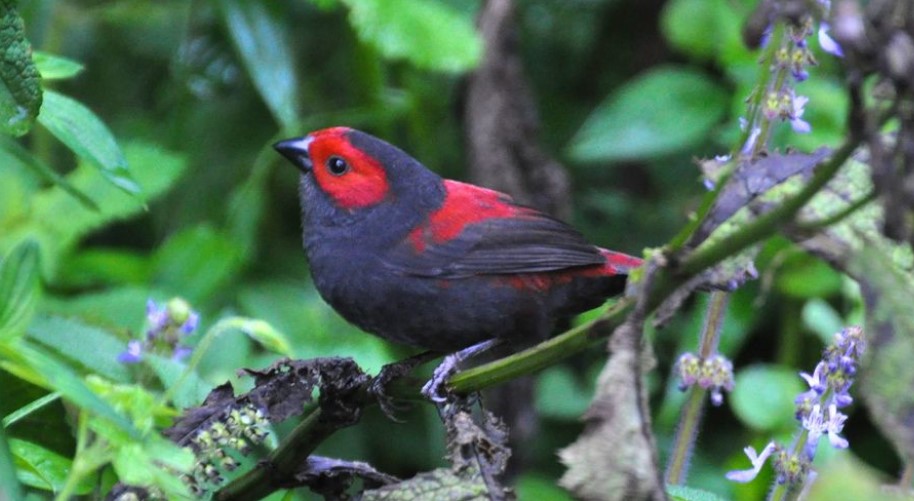
DAY 10 & 11 Uganda Albertine Rift Endemic birding Safari to the Rwenzori
special Ablertine Rift Endemics we shall be looking out for here include; Dusky Crimsonwing Cryptospiza jacksoni, Rwenzori Blue-headed sunbird Nectarinia alinae, The Handsome Francolin Francolinus nobilis, Rwenzori Nightjar Caprimulgus Rwenzori, Mountain masked (Black Faced) Apalis Apalis personata, Rwenzori Batis Batis diops, Rwenzori Apalis Apalis Rwenzori, Grauer’s Rush Warbler Bradypterus grouri,Rwenzori Turaco Tauraco johnstoni, Red-throated Alethe Alethe poliophrys, Kivu ground thrush Zoothera tanganjicae, Neumann’s warbler Hemitesia neumanni, Archer’s Robin-chat Cossypha archeri, Red-faced Woodland Warbler Phylloscopus laetus Regal Sunbird, Cinnyris regia, Purple-breasted Sunbird Nectarinia purpureiventris, Strange Weaver Ploceus alienus, Shelley’s Crimsonwing Cryptospiza shelleyi, Rwenzori, there will also be special high altitude birds like the Scarlet-tufted and Malachite Sunbird, Lagden’s and Doherty’s Bus-shrike, Montane Oriole, Brown Woodland, Ever Green Forest and Cinnamon Bracken Warbler among the many.
The trails take you through the pristine rainforest of the kyambogho ridge with a view of the Mubuku Valley into the forested ridge that is a great habitat to primates including the Rwenzori Colobus monkey, Blue monkey and the least researched L’hoest monkey up to Omu’ka Kizza Rest Camp at about 2,977metres which offer glorious views of the Rwenzori foothills and Kasese town which lies at 2,160 meters. On day two you hike to Mahoma Lake which lies at 3,200 meters above sea level, the forest gives way to thick bamboo that mix with narrow moss-covered ridges, once on top you cross a mossy valley with giant lobelia then climb through an incredibly beautiful forest of giant heather covered in layers of bright green moss.
DAY 12 Uganda Albertine Rift Endemic Birding Safari descending the Rwenzori’s
Start with a morning walk along the lake Mahoma and descend through Nyabitaba a ranger post to the Rwenzori Three-horned Chameleon before you come out of the forest. (Mountain Checklist; Sleeping bag, mountain boots, trekking trousers, woollen socks, cotton shirts, woollen mitten, warm woollen underwear, woollen cap, hand gloves, headlamp, sunhat, rainproof and warm gear, warm pullover, walking stick, Stomach upset drugs, elastic bandage, sunscreen, insect repellents among others).

DAY 13 Uganda Albertine Rift Endemic Birding Safari to Semliki Valley National Park in Uganda
Today morning, we bird the edges of the Rwenzori Mountains National Park for more species possibly missed the previous days and later proceed to Semliki Valley National Park. Depending on where you are staying, birding the main road and the Sempaya Hot springs can produce the Afep, Olive and White-naped Pigeon, the extra ordinary Long-tailed Hawk, Fire-crested Alethe, Forest Robin, Blue-breasted Kingfisher, White-crested, Piping, White-thighed, Black-casqued Wattled and Red-billed Dwarf Hornbill, Orange-cheecked Waxbill, Black-bellied Seedcracker, Western Bronze-naped Pigeon and many more.
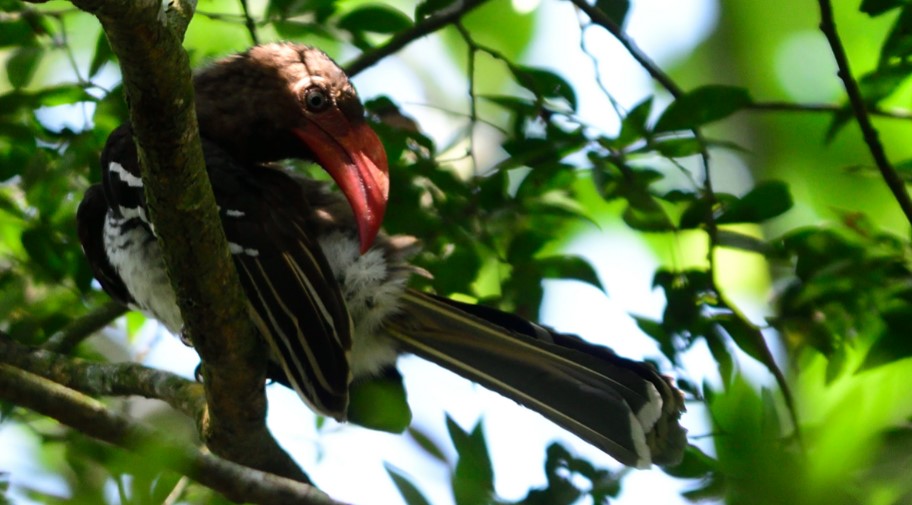
DAY 14 Uganda Albertine Rift Endemic Birding Safari in Semliki Valley National Park
The main Birding train if Semliki National Park is Kirumia and a few other adjoining trails like Pitta, Red tailed Monkey and the likes. We lookout for a number of predominantly Guinea Condo biome endemic bird species including the Accipiter suggesting Congo Serpent Eagle, Long-tailed Hawk, Piping, Black-casqued Wattled, Red-billed Dwarf, Black-billed Dwarf and White-crested Hornbills, Lyre-tailed and Zenker’s Honeyguide, Swamp Palm Bulbul, Leaf-love, Spotted, Icterine and Xavier’s, Yellow-whiskered, Red-tailed, Little and Plain Greenbul, Lowland Akalat, Fire-crested Alethe, Snowy-headed and Blue-shouldered Robin-Chat, Black-winged Oriole, Yellow-throated Green Cuckoo, Red-eyed Puffback, Rufous-sided Broadbill, Northern Bearded Scrub-Robin, if the hike is longer and towards the ox-bow lakes there are many chances of the White-throated Blue Swallow, the rhythmical Yellow-throated Nicator, Western Nicator, Green-breasted Pitta, Capuchin Babbler, the tail-less appearing African Piculet, Blue-billed and Crested Malimbe, Blue-throated Roller, Red-fronted Tinkerbird, Jameson’s and Yellow-bellied Wattle-eye, Dusky-long Tailed Cuckoo, the attractive and distinctive Red-billed Helmet Shrike, the greyish eyed Maxwell’s Black Weaver, the list is endless. We later drive to Kibale Forest National Park where we shall have our dinner and overnight stay.

Day 15: Uganda Albertine Rift Endemic Birding Safari to Kibale Forest National Park
After an early breakfast, go out into the forest with a major focus on searching for the hard to find Green-breasted Pitta, much as it is the focus, expect to hear and see the Western Nicator together with some great flocks and special bird species including the Afep and the globally threatened White-naped Pigeon, White-headed Woodhoopoe, Red-chested Owlet, Black-headed Paradise Flycatcher, Blue-throated Brown, Superb, Green-throated, Grey Green, and Green-headed Sunbirds, African Shrike-flycatcher, and Chestnut Wattle-eye. Red-headed Malimbe, Greenbuls are well represented and includes the, White Throated, Slender-billed and the scarce Toro Olive among the more widespread forest species in East Africa. The noisy and whacking Dusky Long-tailed Cuckoo, Red Chested Olwlet, the large African Grey Parrots frequently feed in roadside figs, the loral spotless Willcock’s honey guide, Joyful Greenbul, Black Bee-eater, Green Twinspot, Black-bellied Seed Cracker, Bi-coloured Mannikin, Yellow-rumped, Yellow-throated and Speckled Tinkerbird among others. Butterflies, Olive Baboons, Mangabey, bush pig and the giant forest hog may also be spotted.

Day 16: Uganda Albertine Rift Endemic Birding Safari to Kampala/Entebbe
We will start after a morning breakfast and drive through the Kibale Forest National Parky with birding stopovers en route to look out for special species like the Highland Rush Warbler, Blue-headed Coucal, Marsh Tchagra, Northern-brown Throated Weaver in the swamps around the Fortportal hospital then proceed for another birding stop at Sebitoli about 12 km out of Fortportal town looking out for Joyful Greenbul, African Emerald, Dusky and Olive Longtailed Cuckoo, Many-coloured and Lagden’s Bush-shrikes, Valvet Mantled Drongo, Masked Apalis, Purple-headed Glossy, Narrow-tailed, Splendid and Stuhlmann’s Starling, Forest and Yellow-mantled Weaver Many Coloured Bush-shrike, Black-faced Rufous Warbler, Afep Pigeon, Tiny Sunbird, Sabine’s and Cassine’s Spinetail should be watched out for in the blue skies, Green Throated, Olive Bellied and Green Sunbird, , , Yellow-crowned Woodpecker, Cassine’s Hawk Eagle, Northern and Pink-footed Puffback, Black-billed Turaco, Yellow-billed, Grey-throated and Yellow-spotted Barbet White-collared Oliveback, Black Bee-eater, birding around the bridge at times produces views of the Mountain Wagtail, African Black Duck and the Cassine’s Grey Flycatcher the list is endless. We later get to Entebbe for a day room and an early dinner as we await your flight back home. BL – End of our Uganda Albertine Rift Endemic Birding Safari.

